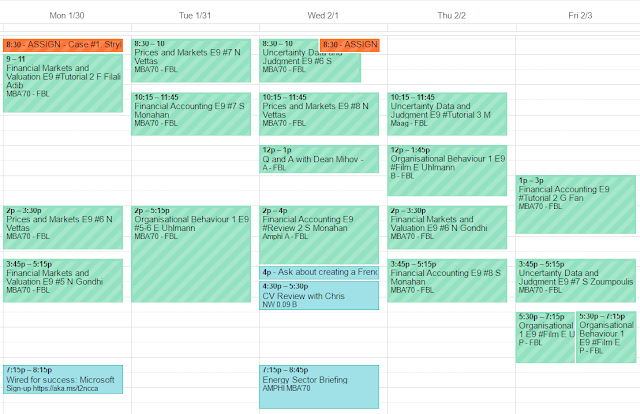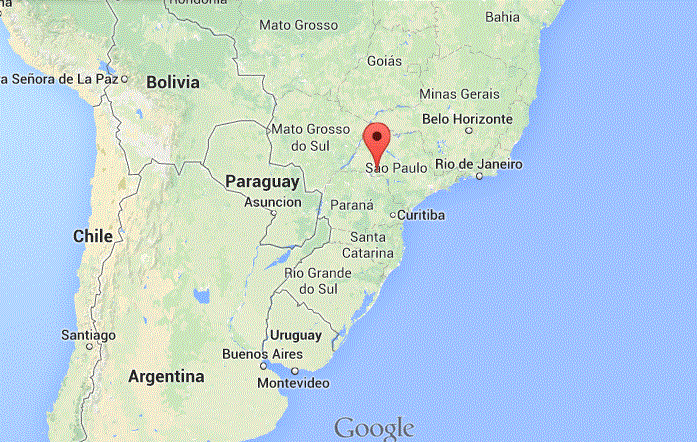India
Mumbai
Arriving in emerging market airports for the first time is always stressful, especially when you are jet lagged. You don't have the right currency, your cell phone is operating at 2G (which is basically non-functional), and you aren't sure of the way things are done yet. I decided that since my hotel was only 0.4 miles from the airport, that I would be able to walk even though it was 9 pm. What I didn't realize was that India doesn't really have sidewalks in most areas and people aren't really driving so much as feeling their way through the streets. I ended up making it to the hotel and the security staff were quite surprised that a gringo had walked rather than take a taxi.
The next day I explored Mumbai not really knowing what to expect. From the Uber ride a few things were clear:
1) Mumbai is massive
2) Pollution is a real problem. The weather was listed as "Smoke."
3) Driving is nuts
Crossing bridge into South Mumbai
Seeing a slum on a hill from the freeway. Looks similar to a favela in Rio.
My Uber driver dropped me off at Colaba Market in South Mumbai after a 1 hour / $4 dollar ride. Even though I've traveled in Latin America extensively and been to Southeast Asia, I hadn't been to a place quite like this. There is a constant chaos of motorcycles, cars, people, bikes, livestock, and street dogs swirling around you at all times. The infrastructure was also quite poor compared to what I was expecting. The roads were quite dusty and there were families lying on mats on the sidewalk. For my first hour or so walking from Colaba to Gateway to India, I didn't see any other tourists.
Once I got to Gateway to India, it felt more touristy. People were hassling me to take a picture of me in front of the monument in exchange for a few dollars. Of the people visiting the monument, it was 95% domestic Indian tourists and 5% foreigners. Adjacent to the Gateway to India is the famous Taj Mahal Hotel, which is the nicest hotel in Mumbai. This is the hotel that was attacked by terrorists in 2008 killing 174 people. I remembered reading about it in the newspapers, and thinking, "oh it's some random hotel." No, it's the premiere hotel in Mumbai. That was a big deal. After that attack, all the hotels instituted security where all vehicles are searched entering hotels and you must pass through a metal detector to enter hotel.
Pictures walking around South Mumbai
I also stumbled into a giant park that had cricket. As it was Sunday, the park was packed. I had always considered cricket to be a game that requires lots of space, like baseball. But since Mumbai doesn't have much open space, the game has been adapted to allow lots of simultaneous games to be played side by side. Imagine 25 adjacent baseball games being played where each home plate is about 10 yards apart in a line. You essentially have a row of pitchers and batters playing simultaneously with the outfield players keeping track of which ball is theirs and making sure not to run into each other. I walked through the park but was quite alert to make sure I didn't get hit in the face with one of the balls. One ball came flying directly at me but I was able to duck.
I quickly learned in India that people will constantly hassle you. Taxi drivers and rickshaw drivers want to give you a ride, shopkeepers want you in their store, beggars want you to give donations, and random "nice" people will try to start a conversation with you that inevitably ends in a request for service or money in some kind. One man insisted that he wanted nothing from me even though I was highly suspicious and said that I didn't want to pay or buy anything. After 15 minutes he dropped the "Oh, I'm really hungry. Could you buy me something to eat?" I hate being so cynical, but as a matter of self-preservation you cannot have any trust for anyone who approaches you.
My first day I also decided to book a tour to visit Dharavi, pronounced "Dar-AH-bay". It is the 3rd largest slum in the world by population with 1 million people in a 2 square kilometer (0.8 square miles) space. I had mixed feelings about booking a tour. Critics call pictures of starving kids in Africa the "pornography of poverty". Perhaps you could call a tour of a slum something similar. However, the tour is organized by an NGO within the slum and my ticket is equivalent to 3 days salary for someone in the slum. In theory, these tourism dollars should help the slum. Also, visiting a slum gives greater transparency into it and motivates people to care more about it. In my mind this is better than pretending the slum doesn't exist and avoiding it.
I was quite impressed by the level of organization and safety within the slum. I felt completely safe and the community seemed well organized. Everyone seemed to be working or doing something. The kids were cheerful and just wanted to say "Hi" in English and give a high-five. The work in Dharavi did look quite hard. One of the main industries is recycling and many workers were banging electronics with hammers in order to separate the plastics, metals, and other materials into containers for further recycling. One man was burning the residual paint out of paint cans in a poorly ventilated room with only a rag covering his mouth from the toxic fumes. I felt uncomfortable from the fumes after just a minute, but he works there all-day everyday for about $7/day. We weren't allowed to take pictures, which I agree is a great policy, in order to respect the community. Here are some of the stock photos from the tour's website:
Driving
Driving in India deserves its own section. First, it's impossible to count to three without hearing a horn. There are two types of horns, a quick beep to let another driver know your positioning, and a longer BEEEEEEP, to say "HEY, don't think about cutting me off!" Drivers use horns to let other drivers know where they are like dolphins use echolocation. While there are usually lane markers on the roads, they seem to be mostly optional. Vehicles will casually drift in and out of lanes as it suits them. If traffic is backing up, drivers will start using the shoulders as well. There is no driving etiquette. Anything that you can do to get somewhere faster is fair game.
Pedestrians are equally reckless. They'll walk straight into traffic to cross the road, but magically cars will steer around them without slowing down. It's like there is a protective force guarding all pedestrians and cars in India. Sitting in the back seat of a taxi you almost have to pretend that you are watching a video game or a movie to not freak out. As if the road wasn't chaotic enough, in Delhi many drivers will drive the wrong way on roads if it will shave off a little time, even on the freeway. The driver will simply put on his emergency flashers and drive in the shoulder wrong way on the freeway.
Two guys getting a ride in the back of this truck. See their feet?
The sign means "back-in parking", but I thought it captured how Indians think about driving.
Delhi
I would compare Delhi and Mumbai to Los Angeles and New York. Delhi is very spread out with lots of freeways. Mumbai is a little more dense and compact. I booked my hotel in Delhi on TripAdvisor and it had 4/5 stars with 800+ reviews. When I showed up, it was literally on the side of the freeway. There was no driveway or parking lot to pull over. My Uber driver had to drive into the freeway should and put on his emergency flashers and I had to wheel my suitcase in the freeway should to the hotel's front door. My colleague said that it was likely an illegal hotel, of which Delhi has many. View from the other side of the street.
My first impressions of Delhi were quite bad. All I saw was pollution, freeways, dust, and random office buildings adjacent to the freeway. Zero plants. Luckily on Saturday my colleague took me to New Delhi, which is much nicer. New Delhi was centrally planned by the British and was their seat of power for South Asia. In New Delhi we visited the house where Gandhi was assassinated and then took the metro to a urban part of town to get some street food. My friend took us to this food stall, which looked quite sketchy but I trusted his judgement. We ended up having 2 plates of chicken biryani, 1 goat knuckle stew, 2 roti, and a bottle of water for $3.50 and it all tasted amazing.
We also took a bicycle rickshaw through the streets, which was the coolest experience I've had in Delhi. The streets were super narrow like the Gothic neighborhood of Barcelona, but with 100x more people. There were individual shops lined all along the streets and the neighborhood was quite diverse with Hindus and Muslims, including many women with full burqas. As a quick side note, the current Prime Minister of India is following the global trend of nationalism and is considered a "Hindu Nationalist" (The Economist). He is basically trying to reclaim India as a country for Hindus and push out India's minority Muslim population. There is an election in March, which will be hugely important for the future direction of the country. Here are some pictures from the alley.
Wild monkeys are all over Delhi. Apparently they are quite a nuisance.
Vegetarian Thali. I didn't think I was very good with food, but I ended up having dinner with an American my last night who had just arrived and I was the de facto expert on the menu, which is crazy after just one week. Poori, Dosa, Sambar, Ghee, Parantha.
Overall, it was a good introduction to India. I had some failures (I wasn't able to book train tickets online to visit Taj Mahal and I struggled with haggling with street vendors), but overall India is an interesting country for travel. I would not call it a relaxing country, you'll notice that none of my pictures are "pretty" in a traditional sense. But it certainly is culturally diverse and the food is great (no I didn't get Delhi Belly). My business meetings were also successful after I learned that a figure 8 head nod means, "I understand, please continue." Given that India is on-track to add lots of solar energy, I expect I'll be back to India in the next 12 months. Until then.























Comments